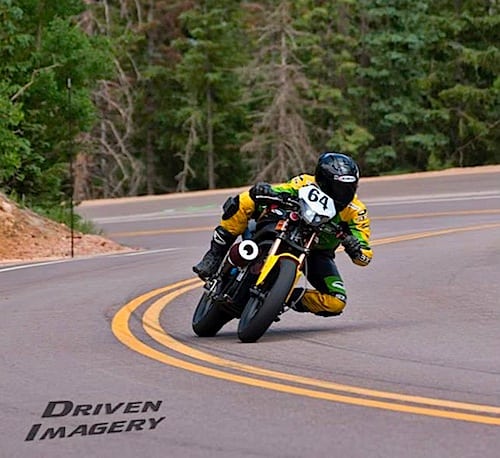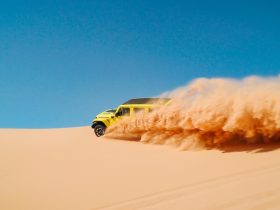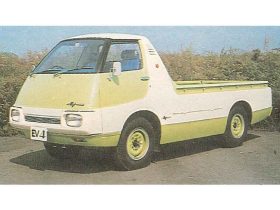
Ever wonder what it take to race an electric motorcycle? I caught up with Jeremiah Johnson who successfully raced his electric Motorcycles at Pikes Peak 2013. This weekend, he came in third at the Mazda Speedway Laguna Seca for the eRoadRacing World Cup.
Nicolas Zart – Hi Jeremiah, can you tell us about racing Pikes Peak for the first time?
Jeremiah Johnson – The opportunity to race Pikes Peak was huge for me. I always wanted to do this race. It is one of the oldest motorsports events in the country and it has an international legendary status. I was stoked when Harlan from Hollywood Electrics called me to ask if I was interested in racing Pikes Peak. This year’s Pike Peak race was really important for me particularly, since it was the first time the “Race To The Clouds” had an all-electric motorcycle class. I was excited this was going to be my rookie run. Just being able to make the run up the mountain was a dream come true. The success we had, made it an even more special race for me. It was really cool to win the first ever Fastest Qualifier award in the Electric Motorcycle class!
NZ – Why did you chose Zero Motorcycles?
JJ – I have been racing motorcycles for over 20 years, turned pro about 12 years ago. I have raced pretty much every class of gas bikes in the pro series, from Harley-Davidson XR1200s up to full blown 1000cc Superbikes. I got into building electric motorcycles because I wanted something different. I’ve been in the EV industry for about 5 years trying to bring my racing background to the industry. I built an electric race bike last year. Unfortunately, one of the parts I paid a company to set up for me was never completed. I had to re-build my project from the ground up. After speaking with Harlan from Hollywood Electrics, my race team decided that we could get a 2013 Zero motorcycle for close to the same price as having to build a whole new bike. We decided that it would be better to start off with a working platform and modify it for racing. It is hard to race a prototype machine with little time for proper testing. So we bought a Zero motorcycle from Hollywood Electrics and worked with them to make some improvements for racing.
NZ – Why is racing electric motorcycles important?
JJ – I race because I love to race, it is in my blood. I would race even if there was no agenda or reason. At this point in my career, I feel I can help raise awareness around electric vehicles. I knew we could show people that electric vehicles can hold their own against gasoline powered ones. The industry is still very young, but we are making huge strides in performance every year. I have always felt that racing breeds better machines. My job as a test rider is to go out there and push things past their limit, to break things. Then we can look at the data and find out how and why it broke, and the factory can take that information to make better parts. The factories can only do so much testing, they can only push things so far. Racing is about running things to the limit without breaking down.
I think Pikes Peak is a significant race for a few reasons. For one, you won’t find a test track that will put stress on machines as much as it does. It is about 12 miles, 153 turns and climbs to an altitude of 14,110 feet. We found issues that never presented themselves at my test track in the flats of Florida. I also feel that being able to have a good showing in front of an international crowd is a great way to promote not only the Zero brand, but the electric vehicle movement in general. I know a LOT of people took notice.
NZ – How much work and effort go into preparing an electric motorcycle for races?
JJ – Preparing a race bike is always a lot of work. We strip everything down and then rebuild it with just the essential racing parts. On this bike I stripped everything except the frame and the battery. With all motorcycles, I have my suspension rebuilt for the race track. I took the Zero down to my old crew chief, Grant “Yasuji” Matsushima, from my gas racing days, and he went to town on my forks with a complete overhaul. I had a lot of discussions with him about different aspects of getting the bike set up, with everything from geometry to battery charging.
I ended up putting on some Hollywood Electric prototype rearset brackets on the bike, which raised my foot pegs up and brought them farther back than stock. I also switched out the “gas tank” shell for a modified gas tank shell I made from an old Suzuki GS tank. This pushed my body farther back on the chassis to put me in a better location to really ride the bike to the limit. I also ended up putting on a Yamaha TZ 250 race tail section for this same purpose. Having a good solid, metal tank allowed me to really use my body against the tank for braking and cornering. I got a lot of comments about putting a gas tank on an electric bike, but I don’t think a lot of people realize how much they actually use their tank in riding. I also switched out the controller, which is an EV’s equivalent of a carburetor and ECU combined, going from a size 4 to a size 6. The size 4 allows for about 420 amps, while the size 6 is rated for about 650amps. After doing a test up at Pikes Peak before the race weekend, we found that I was over heating the motor in such extreme conditions, so I also made a forced air cooling system into the motor to help remove some of the heat build up. Harlan also helped me to go through the programming of the controller and make some adjustments based on my riding style and how I wanted the bike to perform.
NZ – What can you tell us about the competition this year?
JJ – Well, there weren’t any gas bikes in our exact category, but everyone has a preconceived notion that electrics are just toys, that they can’t compete against gas bikes. So in actuality no one expected us to do well. I think we ended up being a bigger threat than the gas bikes expected, not the other way around. I was running my bike at 50% torque output the whole race week. I wanted to test in race setup to be able to calculate how it would hold up to doing the whole run. For my last run of qualifying, I decided that I wanted to really see what the bike could do if I pushed it. I still ran with the 50% power setting, but I had Harlan make a software adjustment that would allow me to run at that power for the full qualifying run. I also switched my brain to push all out, rather than trying to run a consistent pace. My final qualifying time put me in 35th fastest out of 83 motorcycles, only about 7 of those were electric. My time would have placed me in 3rd place in the 250 Supermoto class and 4th place in the 750 Superbike class. I was very happy with that run for my first time doing the race.
NZ – How do you feel about the future of electric racing?
JJ – I think the future of electric racing is already here. The fastest outright time for a motorcycle this year was an electric limited build, almost prototype class bike, ultra performance. It shows that the technology is here. I think we showed that even the production electric bikes you can buy from a dealership, like Hollywood Electrics have the potential to be serious contenders. I think next year is looking really good for electrics. To my knowledge, this was the first time that a production electric motorcycle had been raced to the summit of Pikes Peak. When we got to the top, I was already talking with Jeff Clark about how to make changes for a stronger run next year.
NZ – This year was the year of the electric motorcycle at Pikes Peak, any anecdotes you would like to share with CarNewsCafe?
JJ – I was honestly really amazed at how much performance we were able to get out of these production bikes. We definitely out performed the bike that was getting a lot of pre-race media attention as being an electric “Superbike”. Considering that I was running at only 50% power and had over half of my battery capacity left at the end of the race, I’m seeing huge potential with these Zero Motorcycles. We found the limit of a few components, but that’s what racing is for. We didn’t have any mechanical failures on any of the Zero motorcycles. The bike’s circuitry kicked in to protect it from causing any harm to the system. Now that we know the limits, it’s time to make those components even stronger. I am really looking forward to being able to run the bike at 100% power and giving the gas bikes a real run for their money next time.
NZ – Lastly, what races are you looking forward to this year? Is endurance something you are working on?
JJ – I’m a road racer, so I’m really looking forward to the eRoadRacing series on some closed course race tracks. Laguna Seca is always a huge event with the MotoGP boys, and it is always good fun to see all my AMA race friends. I’m really looking forward to racing the electrics at Indianapolis. I’ve already raced there before, but this is the first time that electric motorcycles will race there. I’m always stoked to be part of the first to do something. The one I’m looking forward to the most would have to be the World Final. Part of my goal in racing is to race on as many different tracks as I can, 27 so far. I’ve already raced at all the major tracks in America, so naturally my next step is to race on a track outside of the US.
As far as endurance racing, I really like endurance racing. I’ve done quite a few endurance races with the gas bikes. And we’ve actually already done an endurance race this year with a Zero Electric motorcycle. We were able to swap out our batteries faster than the other teams were able to fill their gas tanks, so I think we actually have an advantage over gas bikes in endurance racing. If there was an opportunity to do more electric endurance racing, I would definitely be up for twisting the grip for that.
You can follow Jeremiah’s Be-EV on Facebook and YouTube
Jeremiah Johnson is part of a new motorcycle racing era who has switched to electric motorcycles. His enthusiasm is communicative. I hope you enjoyed this interview with Jeremiah Johnson racing at Pikes Peak in 2013 with his Zero Motorcycles, as much as I did.







